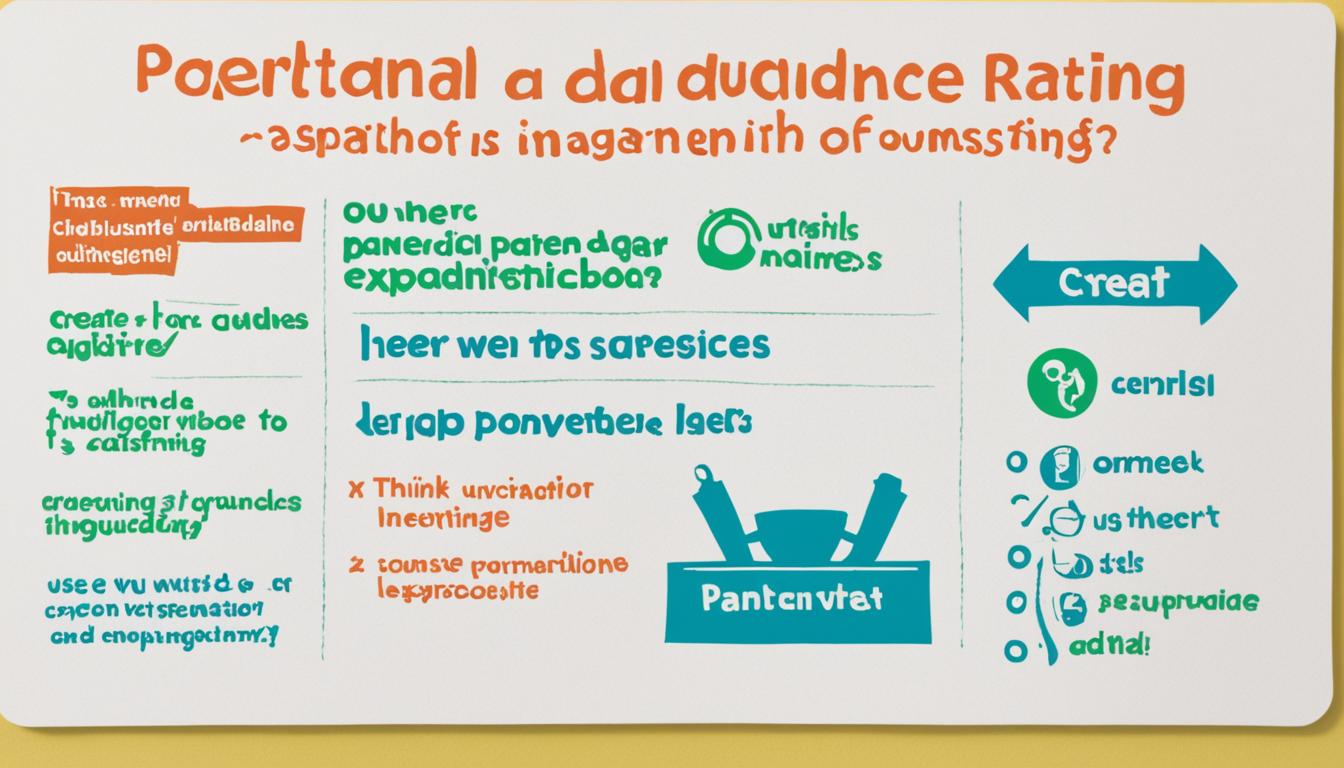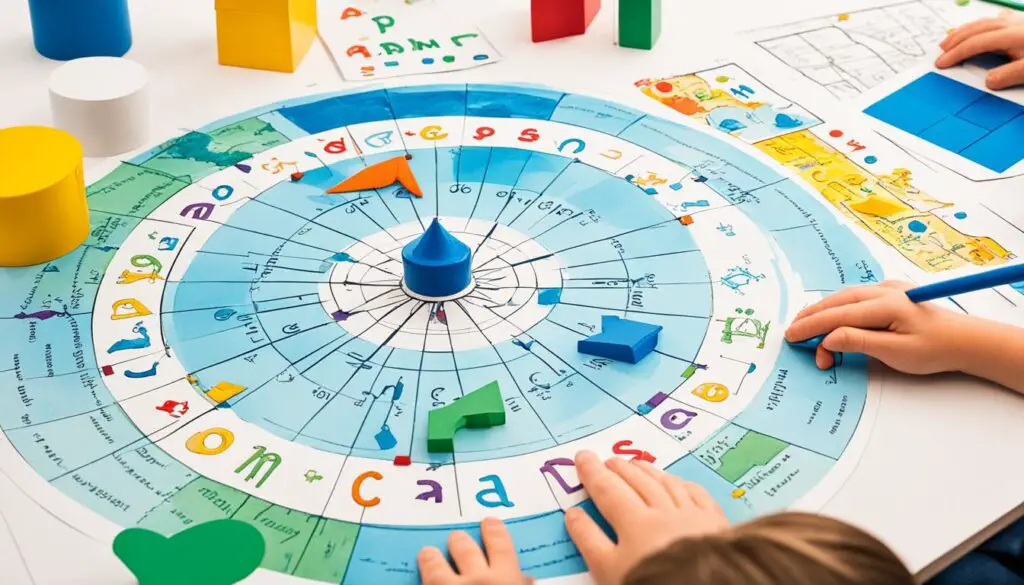
Guided Viewing: Navigating Parental Guidance Ratings Together
As a responsible parent or caregiver, ensuring that the media content your children consume is suitable for their age and development is of utmost importance. In today’s digital age, where children have easy access to a vast array of movies, TV shows, and video games, it can be challenging to make informed decisions about what is appropriate for them.
This is where parental guidance ratings come in. These ratings serve as a helpful tool to guide you in selecting suitable media content for your children. By understanding and navigating these ratings together, you can ensure that your children have a safe and enriching viewing experience.
To help you navigate the world of parental guidance ratings and make informed choices, let’s delve into what they are, how they work, and how you can use them effectively.
Key Takeaways:
- Parental guidance ratings assist in choosing age-appropriate and content-appropriate media for children.
- These ratings reflect the suitability and any potential risks associated with movies, TV shows, and video games.
- Understanding the rating systems and symbols used by various organizations is crucial.
- Parents and caregivers should familiarize themselves with the specific age ranges and content descriptors for each rating.
- By using parental guidance ratings effectively, you can make more informed decisions about the media content your children consume.
What are Parental Guidance Ratings?
Parental guidance ratings are a system used to categorize media content based on its appropriateness for different age groups. These ratings provide valuable information for parents and caregivers to make informed decisions about the suitability of media content for their children. By understanding these ratings, parents can ensure age-appropriate and content-appropriate choices for their kids.
Various organizations are responsible for assigning and maintaining these ratings. For movies, the Motion Picture Association (MPA) evaluates and assigns ratings. The Entertainment Software Rating Board (ESRB) handles ratings for video games, and the TV Parental Guidelines Monitoring Board oversees television shows.
The ratings themselves typically consist of letters, symbols, or age ranges that indicate the intended audience for the content. Along with the age appropriateness, they may also highlight any potentially objectionable material present in the media. This helps parents and caregivers understand the content rating and make informed decisions about what content is suitable for their children.
For example, the MPA has a range of rating categories, including:
- G (General Audiences): Suitable for all ages, with no objectionable content.
- PG (Parental Guidance Suggested): May contain some material that parents may find unsuitable for younger children. Parental guidance is advised.
- PG-13 (Parents Strongly Cautioned): Some material may be inappropriate for children under 13. Parents are urged to be cautious and may deem some content unsuitable for their children.
- R (Restricted): Restricted to viewers over the age of 17. Parents are strongly urged to learn more about the content before allowing their children to watch.
Understanding these ratings empowers parents and caregivers to make informed decisions about the media content their children consume. By paying attention to these ratings and the accompanying content descriptors, they can ensure a safe and enjoyable viewing experience for their families.

Summary of Parental Guidance Ratings
| Organization | Media Type | Rating Categories |
|---|---|---|
| Motion Picture Association (MPA) | Movies |
|
| Entertainment Software Rating Board (ESRB) | Video Games |
|
| TV Parental Guidelines Monitoring Board | Television Shows |
|
How to Use Parental Guidance Ratings effectively
When it comes to choosing age-appropriate media content for our children, understanding and utilizing parental guidance ratings is crucial. These ratings help us make informed decisions about the suitability of movies, TV shows, and video games for our kids. To effectively navigate parental guidance ratings, it is essential for parents and caregivers to familiarize themselves with the specific rating systems used for different types of media.
Each rating system, whether it’s provided by the Motion Picture Association (MPA), the Entertainment Software Rating Board (ESRB), or the TV Parental Guidelines Monitoring Board, uses symbols, age ranges, and content descriptors to indicate the intended audience and potential content concerns. By taking the time to understand these symbols and descriptors, parents can confidently select media that aligns with their values and their child’s age and maturity level.
By paying attention to parental guidance ratings, parents can ensure they are making age-appropriate choices in media content. These ratings provide valuable information about potentially objectionable material, such as violence, language, or sexual content, allowing parents to make decisions that align with their family’s values and protect their children from exposure to inappropriate content. By actively engaging with these ratings, parents send a message about the importance of making responsible media choices and creating a safe and enriching viewing experience.
FAQ
What are parental guidance ratings?
Parental guidance ratings are a system used to categorize media content based on its appropriateness for different age groups. These ratings provide guidance on the age appropriateness, content, and any potential risks associated with a particular movie, TV show, or video game.
Who assigns parental guidance ratings?
Parental guidance ratings are assigned by organizations such as the Motion Picture Association (MPA) for movies, the Entertainment Software Rating Board (ESRB) for video games, and the TV Parental Guidelines Monitoring Board for television shows.
What do the different parental guidance ratings mean?
The ratings typically consist of letters, symbols, or age ranges that indicate the intended audience for the content and any potentially objectionable material. For example, the MPA uses rating categories such as G (general audiences), PG (parental guidance suggested), PG-13 (parents strongly cautioned), and R (restricted).
How can I effectively use parental guidance ratings?
To effectively use parental guidance ratings, it’s important to familiarize yourself with the rating systems used for different types of media. This includes understanding the specific symbols, age ranges, and content descriptors associated with each rating so you can make more informed decisions about the suitability of media content for your children.
Why is it important to use parental guidance ratings?
Parental guidance ratings play a vital role in helping families make informed decisions about the suitability of media content for children. Understanding and navigating these ratings can ensure that parents and caregivers can choose age-appropriate and content-appropriate media for their children, creating a safe and enriching viewing experience.